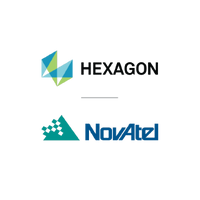
360
Technology jobs filled globally
Staffing, HR and employment services


Employer Services
Our team specialises in contract and direct hire recruiting, connecting businesses with top professionals. From filling long-term positions to scaling teams for short-term projects, Airswift delivers the right talent to support your company’s goals.

360
Technology jobs filled globally

37
Countries where we have hired

20
Different disciplines we recruit for
For over 40 years, Airswift has connected businesses with the skilled IT and technical professionals they need to thrive. Our global network of talent includes experts in fields such as artificial intelligence (AI), data science, cybersecurity, and software engineering.
Finding the right talent is about more than skills. It’s about adaptability, problem-solving, and the ability to keep pace with evolving technologies. That’s why companies trust Airswift. We use a targeted, data-driven approach to identify candidates who not only meet your technical requirements but also align with your business goals.
With advanced market insights and talent analytics, we help you make informed hiring decisions, reduce risk, and ensure long-term success. Let Airswift handle the complexities of recruitment so you can focus on growing your business.

A leading European IT and Telecommunications specialist needed a Deskside Technician in Bolzano for deskside support. The role required bilingual proficiency in English and Italian or German, with expertise in Windows environments and complex IT support.
We identified a certified IT professional skilled in MS Windows 7/10, Office 365, SCCM, and ServiceNow. Their diagnostic abilities and project management experience ensured seamless IT operations, quick issue resolution, and improved user satisfaction, adding value to the client's regional workforce.

A global energy operator in Perth required a Master Data Specialist. We sourced a proactive specialist with expertise in SAP Materials Management Data and experience in the resources sector.
The candidate streamlined cataloguing, drove data cleansing initiatives, and guided end users, improving data accuracy and alignment across departments. Their contributions enabled faster decision-making and greater efficiency throughout the project’s lifecycle.

Our client in the energy sector needed an Operations and Production IT Analyst to support critical applications in Queensland. We sourced a Brisbane-based candidate with 5+ years of experience in system administration, SQL database management, and application support.
The candidate improved system uptime and incident resolution, ensuring operational stability. Their strong stakeholder engagement, vendor management, and focus on cybersecurity enhanced service-level agreements and business needs, delivering significant value to the client’s digital operations.

Airswift is the staffing agency of choice for world-leading businesses.
We manage 60 offices worldwide, 1,000 employees and 9,000 contractors. Our global reach and pool of available talent is unmatched in the industry.
Our consultants maintain a proactive presence in the market in order to remain relevant to current market demands.
Functioning as key advisors and talent strategists, we offer services designed to enable your organisation to achieve its full potential.

Inmarsat
Client

NovAtel Hexagon
Client

8 Rivers
Client

Find your next role
Our contract and direct hire recruiters help top talent at every stage of their job search. Whether you’re searching for full-time or temporary work, Airswift can help you find the right role for your career goals and skill set.

Contract
5 Jan 2026
Perth, Western Australia, Australia
Contracts Advisor - Digital & Technology
Contracts Advisor - Digital & Technology Location: Perth Duration: 12-month ...
Contract
26 Dec 2025
Malmo, Sweden
Java Developer (Java & Golang)
Java Developer (Java & Golang) Location: Malmo, Sweden (Office Based) ...
Contract
17 Dec 2025
Malmo, Sweden
C++ Developer with Machine Learning : We're looking for an experienced C++ ...
Contract
15 Dec 2025
Brussels, Belgium
Data Engineer Location: Brussels, Belgium (Office-Based) Duration: 12 months ...
Contract
10 Dec 2025
WFH, Romania
Job Title: Palantir Data Engineer Duration: Initial 6 months contract Workload: ...
Contract
10 Dec 2025
Permanent
10 Dec 2025
Permanent
3 Dec 2025
Kuala Lumpur, W.P. Kuala Lumpur, Malaysia
(Urgent Hiring) Software Test Engineer Location: Kuala Lumpur Working Hours: ...
Contract
26 Nov 2025
Poland , Poland
Quality Architect Job Type: Contract Work period: Full-Time Duration: 1 year ...









Our client needed a local partner to act as the employer of record, providing staff with all employment requirements

A leading fintech start-up required a Lead Database Developer to support its rapid expansion across SE Asia

Our client was looking to expand to the USA and needed specialised recruiters with American market knowledge.

Airswift provided employment outsourcing for telecoms infrastructure firm in Kuwait including immigration and payroll outsourcing

GETI is an annual energy employment trends report focused on oil and gas, renewables, power, nuclear and petrochemicals.

Uncover green hydrogen top projects, companies, jobs in demand, and how a world-leading renewable energy staffing company can help you.

Download our ESG guide to learn how ESG influences career choices and boosts your company’s growth.

Discover how Airswift supports the REDD+ Cerrado Project to combat deforestation, reduce carbon emissions and conserve biodiversity in Brazil.

Discover tips on copywriting, showcasing achievements, leveraging AI, and staying updated.